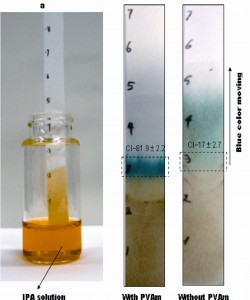(Beyond Pesticides, November 23, 2009) Two powerful lobby groups in the food industry, the Grocery Manufacturers of America and the Organic Trade Association, recently intervened as friends of the court in a federal consumer class-action lawsuit accusing the nation’s largest supplier of private-label organic milk of consumer fraud. In what has been described as “the largest scandal in the history of the organic industry” USDA investigators, in 2007, found that Aurora Dairy had willfully violated federal organic standards. However, industry lobbyists are now concerned that convicting Aurora will set a dangerous legal precedent. Aurora bottles private-label organic milk for Wal-Mart, Costco, Target, Safeway and many other grocery chains.
In August 2007, Bush administration officials were widely criticized for overruling career staff at the USDA and instead of decertifying Aurora as staff had recommended, banning it from organic commerce, the corporate dairy was allowed to continue in business under a one-year probation. Now agribusiness lobbyists are concerned that citizens prevailing in court, alleging fraud, will set a precedent necessitating large corporations to incur added expenses to more carefully check the sources and credibility of their organic suppliers.
“Due diligence by food manufacturers and retailers is the heart and soul of what maintaining the integrity of the organic label is about,” said Mark Kastel, co-director of The Cornucopia Institute, the farm policy research group that initially exposed the corruption taking place at Aurora.
In an internal document, the Organic Trade Association told its membership that, “OTA is taking this action in order to protect consumers’ access to organic products and the guarantee by organic farmers, producers and processors that their valid organic certificate fully demonstrates that their product is considered organic when marketed.” Lobbyists from the Grocery Manufacturers also are concerned that if the consumers prevail in this legal matter it would become, according to a copy written article in Sustainable Food News, “prohibitively expensive to continue developing organic products.”
“This type of rhetoric is just a stick in the eye to the ethical participants in this industry who make it a point, in their everyday course of business, to judiciously assure that their products meet not only the letter but the spirit of the organic law,” added Mr. Kastel.
Just like Aurora Dairy, Wal-Mart and Target were both found to have misrepresented organic products in the marketplace and were the subject of separate USDA investigations.
“Yes, it does cost more money to legally and ethically participate in organic commerce,” said Will Fantle, research director for Cornucopia. “One of the reasons that big-box retailers are able to undercut their competition on price is they refuse to hire, train and adequately compensate management and frontline employees who know anything about the organic law.” Aurora produces private label, or storebrand milk, for about 20 of the largest grocery chains in the United States.
“Aurora’s factory farm milk has injured the vast majority of Organic Valley’s own farmer-members by depriving them of markets for their milk and unfairly driving down retail pricing. Earlier this year the cooperative cut the pay price to its members and required its farmers to reduce production because of a milk surplus in the marketplace – a surplus that would be much smaller if Aurora legitimately managed its dairy cows like Organic Valley’s ethical dairy farmers,” Mr. Kastel said.
Cornucopia analysis, and USDA research, suggests that as much as a third of the nation’s organic milk supply comes from giant factory farms. Another organic factory farm operator, Dean Foods, the country’s largest milk marketer, and an OTA and GMA member, has been widely criticized in the organic community for procuring much of its milk for its Horizon brand from mega-dairies allegedly breaking the same rules as Aurora.
The friend of the court brief, opposing a lower court ruling, expresses fears about a precedent should consumers be compensated for any fraud committed by Aurora.
Analysts at Cornucopia strongly refute the contention that the Aurora matter would leave all organic marketers open to tort complaints by consumers. “Obviously, there is strong evidence for these consumers to believe they were defrauded by Aurora and the supermarket chains,” Mr. Kastel said. “This is an exceptional situation not indicative of the industry as a whole.”
Mr. Kastel cited the fact that Cornucopia sent certified letters to every one of Aurora’s retailer customers informing them that the reputation of their store’s label was at risk and encouraging them to take action. Only two marketers, the Publix supermarket chain in Florida and United Natural Foods International, the largest organic food distributor in the country, did the due diligence necessary and switched suppliers.
“The organic certification documents alone are not enough if evidence is brought to a marketer’s attention that some kind of improprieties are taking place,” Mr. Fantle added. “There is always the possibility that collusion or incompetence has taken place on the part of the supplier, certifier or the USDA.”
A comprehensive investigative story that appeared in The Washington Post referenced the Aurora matter, and a cozy relationship between the powerful Washington lawyer and lobbyist for Aurora, Dean and the OTA, and the former director of the organic program at the USDA alleged malfeasance at the Department has sparked the interest of Congress and an expanded investigation is currently taking place by the Office of the Inspector General at the USDA.
“Congress passed the Organic Foods Production Act of 1990 charging the USDA with preventing fraud; protecting the interests of ethical industry participants and consumers,” observed Mr. Kastel. “The obvious allegation here is that the regulatory branch, the USDA under the Bush administration, failed to properly enforce the law. It is appropriate for citizens who feel they were defrauded to seek a judicial remedy,” he added.
When the nation’s largest organic milk producer Aurora dairy, with five “factory style” farms, in Colorado and Texas, each milking thousands of cows, entered the marketplace in 2004 they proudly stated that they would make organic milk more “affordable.” What they didn’t tell their customers was that their products would be more affordable, allowing them to undercut competitors in the marketplace, because they wouldn’t go to the expense of meeting the strict federal regulations governing organic marketing.
In 2007, after investigating legal complaints filed by Cornucopia about Aurora’s organic livestock practices, USDA staff concluded that Aurora had “willfully violated” 14 tenets of federal organic regulations. Aurora was found by federal investigators to have been illegally confining their cattle to feedlots, brought in conventional cattle that could not comply with organic regulations and, most seriously, selling milk labeled as “organic” that did not meet the legal requirements.
In its formal letter to the company, USDA staff at the National Organic Program stated: “Due to the nature and extent of these violations, the NOP proposes to revoke Aurora Organic Dairy’s production and handling certifications under the NOP.”
But the powerful Washington-based lobby of Covington in Burling, representing Aurora, worked with the Bush administration officials at the USDA to instead allow the $100 million corporation to continue in the organic business with a one-year probation and some modest changes to their operations. The “sweetheart” settlement between Aurora and the USDA provoked a consumer led effort to seek justice in federal courts. Nineteen separate class action lawsuits were brought against Aurora and several national grocery retailers selling Aurora’s suspect organic milk including Wal-Mart, Target and Safeway. The lawsuits claiming consumer fraud were eventually consolidated into a single case in the federal district court in St. Louis. Earlier this year, federal court judge E. Richard Webber dismissed the lawsuit on procedural grounds. An appeal has since been filed seeking to bring the merits of the lawsuit, which have not been heard, back before the court.
Organic integrity at all levels of production and marketing is crucial to the success of the organic food movement. To learn more about organics, visit Beyond Pesticides Organic program page.
Source: The Cornucopia Institute












